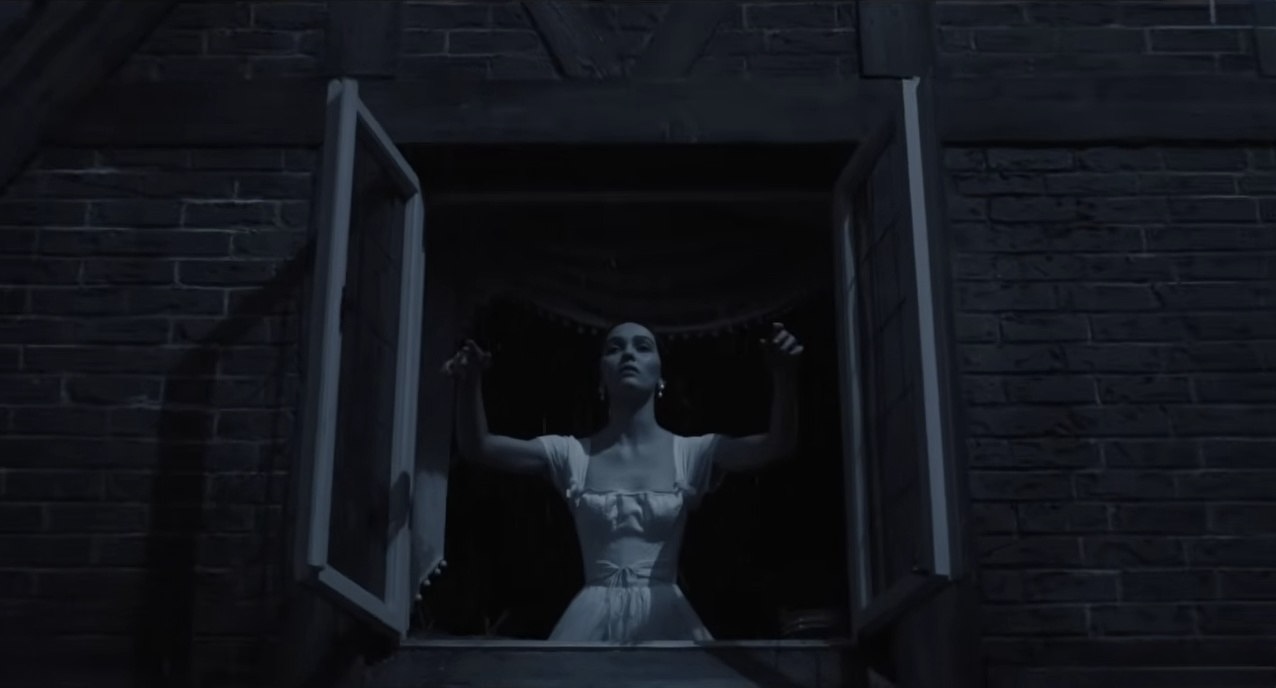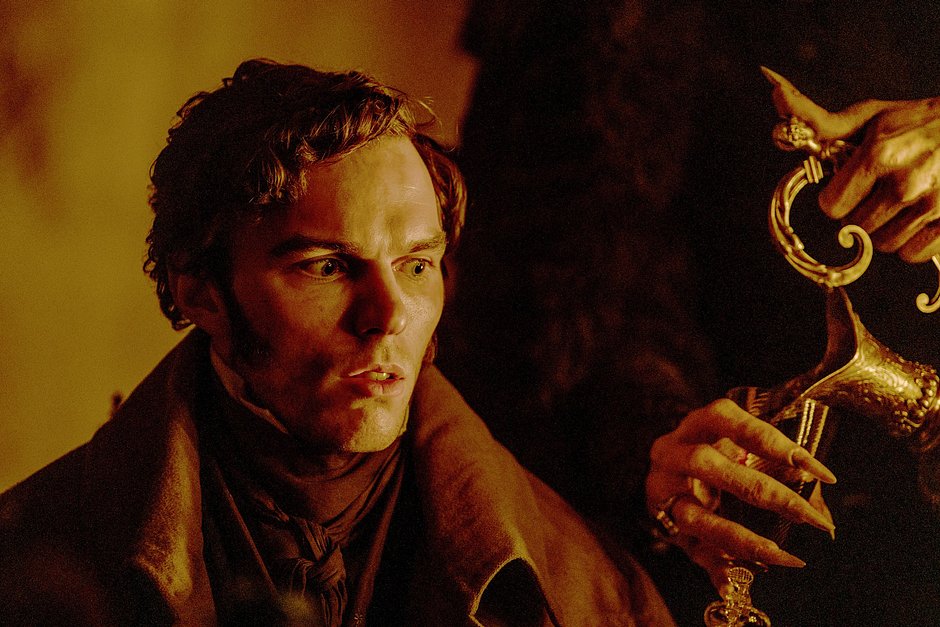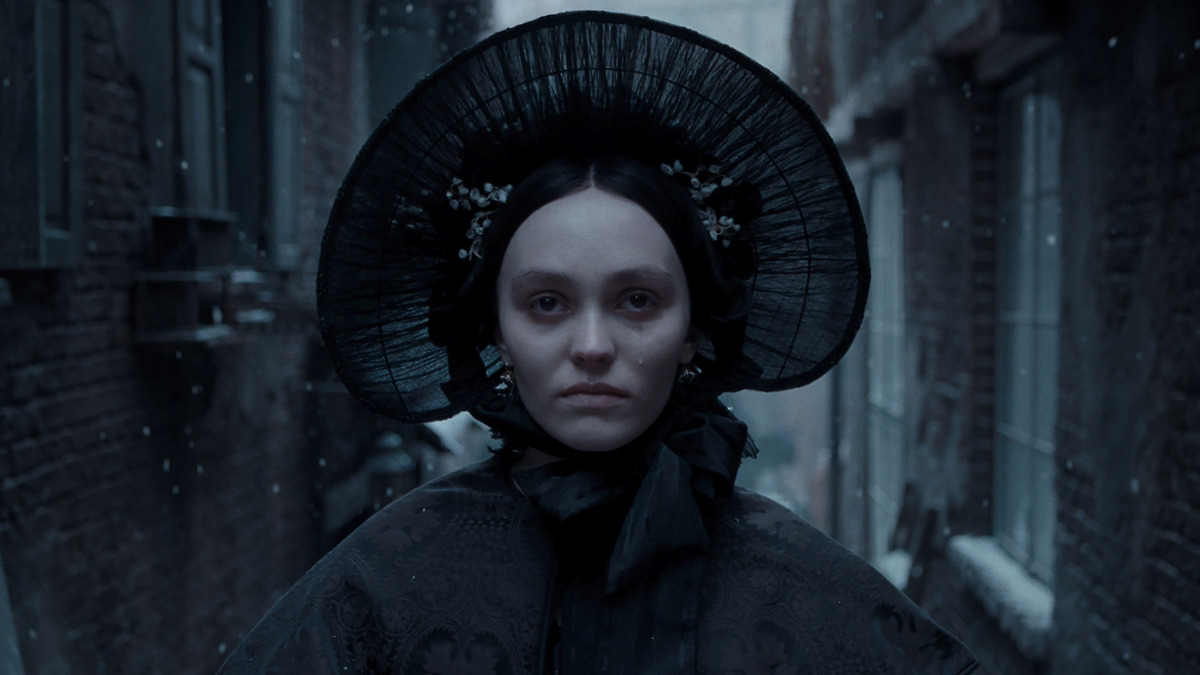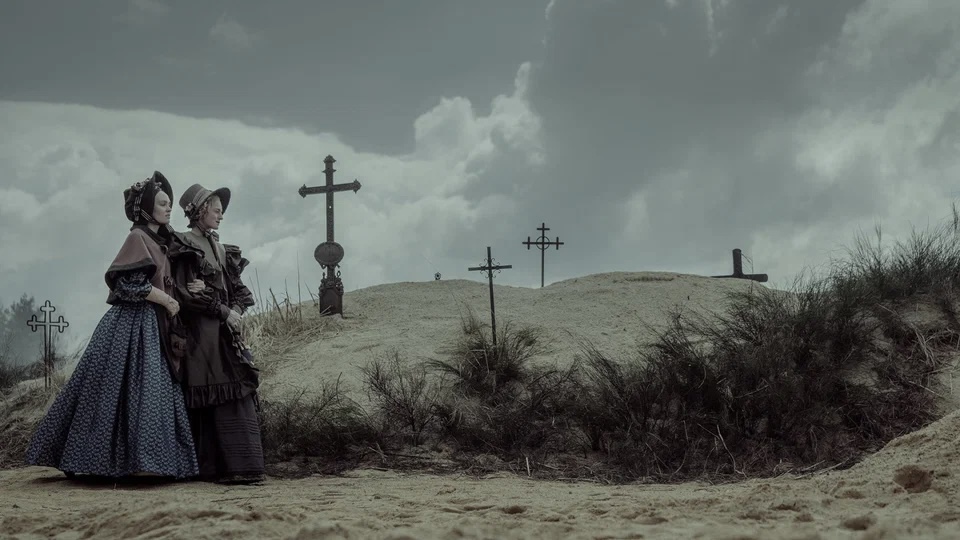Yesterday, one of the main horror films of the past year, Nosferatu, was released. Unfortunately, the film has a very limited release in Russia, but the film is definitely worth your attention.
Director Robert Eggers takes viewers on a journey of gothic horror, and his new version of Nosferatu is a triumph of visual style and frantic tension. What made this movie truly scary? Let’s figure it out together.
We have already watched the new product and are ready to share our impressions.
Nosferatu is a horror classic

What is the film about?: 1838, Wisborg, Germany. The young lawyer Thomas Hutter went to Transylvation to close the deal with Count Orlok, who has an ancient castle. However, he is faced with a terrible secret that hides a mysterious aristocrat.
The film “Nosferatu” directed by Friedrich Wilhelm Murnau, the highest in 1922, is rightfully considered one of the most significant and influential films in the history of cinema.
This is not only the first film adaptation of Bram Stoker’s Dracula, but also a true milestone in the horror genre, giving birth to many iconic images and visual solutions.
Nosferatu was the first attempt to adapt Dracula to the screen, but due to copyright in the novel, the main character’s name was changed from Count Dracula to Count Orlok. However, Bram Stoker’s widow sued the Prana Film studio, which led to its bankruptcy. All copies of the film were ordered to be destroyed, but a few copies still survived, and the Nosferatu material became a cult work.
The classic Nosferatu is an unforgettable example of German expressionism:
• Distorted Perspective: angular buildings, elongated shadows and grotesque decorations create a feeling of nightmare.
• Experimental games with light and shadowsThe ominous silhouettes of Count Orlok on the walls have become one of the most memorable images of world cinema.
• Expressive acting: The actor-turned-Orlok’s exaggerated gestures and facial expressions became the standard for inclusion on screen incarnations of vampires.
An atmosphere that fascinates and frightens

As for the new adaptation, the atmospheric 2024 film is one of its main advantages. Director Robert Eggers managed to create an incredibly dense, oppressive and mesmerizing environment. This is a classic Gothic story enriched with attention to detail. The interweaving of mysticism, suspense and tragedy makes the film not just a scary fairy tale, but a full-fledged study of the people living in people and behind their addiction.
The film literally breathes darkness. Eggers and cinematographer Jarin Blaschke chose a muted, almost monochrome palette dominated by greys, blues and blacks.
Night scenes are painted with candlelight, the contrast between dim lighting and deep shadows creating a sense of imminent menace. Orlok’s castle is shrouded in darkness, its silhouette practically dissolves in the darkness, and the interiors are filled with claustrophobia and ancient fear.
Count Orlok often appears in frame with an intimidating shadow on the street, creating the feeling that he is always nearby, even if he is not in the frame.
The film slowly builds tension, making the viewer feel trapped. Eggers allows scenes to breathe, allowing every detail to contribute to the atmosphere, whether it’s a slowly swaying chandelier in the dark or the distant sound of dripping water. This unhurried progression makes the moments even more terrifying when they finally come to fruition. This technique works great.
Eggers carefully frames his shots, playing with the depth of space. Narrow corridors, castles, huge shadows, construction rooms, close-ups of faces created by insurance – all this evokes a feeling of hopelessness.
What about historical settings? They are simply gorgeous

The historical production of the film “Nosferatu” is also impressive in its detail and authenticity. Every detail – from the costumes to the behavior of the characters – creates a feeling of complete presence in an era when fear of the unknown coexisted with the flourishing of science and progress.
Authors of 19th-century southwestern Europe with astonishing care. The film’s visual style reflects the magnetic yet mesmerizing environment of the time, emphasizing the difference between the two worlds:
1. Carpathian Mountains and Orlok Castle. – ancient, mystical, wild landscapes filled with alarming grandeur.
The Count’s castle looks like an ominous relic of the past, towering menacingly above the surrounding nature. Moss-covered stone walls, Gothic arches and narrow corridors create an atmosphere of frozen time.
2. City of Wisborg – a cozy and at the same time gloomy German town, imbued with the bourgeois aesthetics of that time. The market square, gas-lit streets and illuminated mansions create a contrast with the dark landscape looming from the depths of Transylvania.
This contrast creates the impression of the film.
What makes you shiver when designing your products? Literally everything

The director skillfully creates tension, using not only classic horror techniques, but also a subtle psychological game with the viewer. In Nosferatu, it is not only Count Orlok himself that is frightening, but also the atmosphere, anticipation, sounds and visual solutions. There is everything here – a sense of danger, uncertainty, a gradual build-up of horror.
When the main character first meets the Count, the viewer barely sees Orlok – only his silhouette, slowly growing out of the shadows. At this moment, the viewer only guesses about his true essence, but the tension on the stage is at its peak. The use of shadow and light to create the feeling that the monster is nearby but still hidden.
Helen Hutter becomes the main victim of psychological horror, and her nightmares are some of the film’s scariest moments. These scenes are truly frightening, as the viewer does not understand when the dream ends and reality begins.
Well, and of course, one of the most iconic moments, which Eggers reworked with great love for the original – when Orlok moves through the city, the viewer sees his approach only through the shadows on the walls and floor. Visual aesthetics in the spirit of German Expressionism, the scene has a nightmarish, surreal look. Classic!
Finally, the scene in which Count Orlok arrives in Wisborg, without advice, is one of the most atmospheric and creepy. We won’t tell you, but you will definitely remember it.
Even when the Count does not appear on screen, the film is literally imbued with his presence. Dark corners, an open window, the blowing wind – all this creates the effect that he is always nearby. Eggers achieves this through skillful casting and smart production.
The perfect cast is like the icing on the cake.

The filmmakers have assembled a brilliant ensemble of actors who not only play their roles, but literally bring the gothic atmosphere of the film to life.
Bill Skarsgard, best known for his role as Pennywise in It, once again proves that he is a master of transforming creepy creatures. Unlike the 1922 classic, Skarsgård makes Orlok more than just a frightening monster, a true predator lurking in the shadows.
Helen played Lily-Rose Depp – the heart of the film, and the actress copes with this task one hundred percent. She balances the boundaries of horror and internal forces, turning her heroine from a victim into a central figure in the fight against evil.
The role of the naive but good-natured realtor went to Nicholas Hoult, and he did an excellent job with the part. His portrayal of Thomas is a man who is faced with things beyond his understanding and gradually gains control over himself.
Willem Dafoe is the real star of the film, and his portrayal of the eccentric professor and occult expert is one of the most striking. He brings elements of dark humor and a touch of madness to the film.
Is it better than Coppola’s Dracula? maybe yes

Robert Eggers’ Nosferatu and Francis Ford Coppola’s Dracula are two very different takes on the same legend, each bringing their own unique elements to the horror genre. Both films are based on Bram Stoker’s novel, but take different approaches to the material, including artistic and genre specificities. The films are very different, literally in everything
Robert Eggers creates an oppressive and minimalist atmosphere, using muted colors and shadows to create a sense of doom and inevitable horror.
Francis Ford Coppola, on the other hand, creates a rich visual aesthetic, baroque luxury and romanticism. The film is full of bright colors – scarlet, gold, purple, emphasizing sexuality and passion. This is almost a theatrical spectacle with an abundance of Gothic scenery and costumes.
The image of the vampire in Nosferatu plays him as a predator lurking in the shadows and hunting people not out of desire for love, pure instinct, while Gary Oldman’s vampire in Dracula is not only a monster, but also a tragic figure, yearning for the lost love. His Dracula is a seducer capable of manipulating people, not just a scary monster.
Finally, Nosferatu is an intimate, meditative film, while Dracula is a sweeping romantic epic. The first is suitable for connoisseurs of dark art house, the second – for lovers of bright and spectacular horror.
Be sure to watch “Nosferatu” and best of all in cinema.
Robert Eggers has created a film that is both a classic and a work of its own, capable of imprinting a modern viewer.
“Nosferatu” is not just horror, a deep dive into the atmosphere of gothic horror, where the visual style, subtle tension and strong acting work together to create a coherent and exciting picture.
This is a work of art that frightens with sharp sounds, a periodic feeling of horror that slowly creeps under the casing. This is a film that requires meaningful immersion and long-lasting experience. You’ll like it.
Source: Iphones RU
I am a professional journalist and content creator with extensive experience writing for news websites. I currently work as an author at Gadget Onus, where I specialize in covering hot news topics. My written pieces have been published on some of the biggest media outlets around the world, including The Guardian and BBC News.











